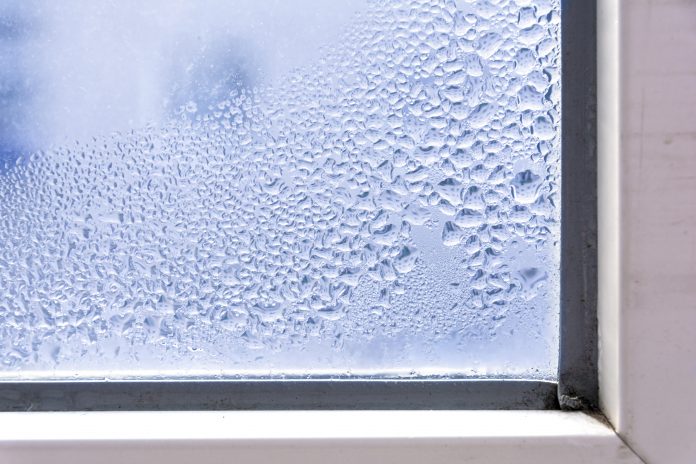In this article, warranty firm ABC+ Warranty explores the signs and causes of condensation in buildings, and how to ensure good ventilation with minimum condensation in properties
Award-winning ABC+ Warranty is the only warranty firm which is registered and recognised with the Royal Institution of Chartered Surveyors. Inspecting properties since 1989, in our experience, these are the things you should be checking for in a property to ensure good ventilation with minimum condensation:
- Is there a breathable felt membrane in the roof?
- Has the property been designed with external soffit ventilation & an associated roof ventilation (ridge vents, tile vents etc)?
- Perhaps your property has sub-floor ventilation if it’s a suspended floor?
What are the causes of condensation in buildings?
Condensation in buildings occurs when there are high levels of humidity, causing excess moisture in the air. Although the amount of condensation in your home can be reduced, it can’t be fully prevented as it is caused by everyday living such as taking a shower, boiling a kettle, cooking and even a family of four just breathing daily, equates to approximately 16 pints of water per day, which must end up somewhere.
Building materials can also cause condensation and this can become particularly noticeable once a new home becomes occupied.
Signs of condensation in buildings can show up as:
- Water droplets on windows or walls.
- Decaying window frames, particularly stained and wet corners.
- Damp walls causing peeling wallpaper.
- Musty/damp smells around the property.
- Black mould on walls, curtains, carpets, bathroom ties and windowsills.
The consequences of condensation
There are many effects of condensation in buildings, first and foremost being the catastrophic effect it can have on a person’s health – it’s estimated that 81% of people are at risk of respiratory problems or dermatological conditions due to the air in their homes.
It can also cause the property to become severely damaged, with energy-saving measures such as draught proofing, double glazing and cavity wall insulation there is no natural escape route for this stale, humid air, which is now trapped inside the home.
Water condensation ruins homes, both inside and out. Not only does it destroy carpets and furnishings, it can also cause damage externally. Moisture can become entrapped within the structure, leading to long-term corrosion of external walls, metal structures, timber rot, loosening of nails as timber swells, and cladding rot or swelling, which can result in costly rectification work.
Not forgetting that your heating must work even harder to try and combat these issues,
costing you more and more, especially with the increase of energy costs.
However, by increasing the temperature in your room, especially overnight and in the winter, will help to prevent the build-up of condensation on your windows and walls.
What ways are there to manage and control condensation in buildings?
- Turn on your extractor fan when using your shower and/or open the bathroom window.
- Ensure your washing machine is correctly vented (improperly fitted washing machines cause around two litres of water to be emitted into the air from just one load).
- Moving furniture away from external walls.
- Installing an extractor fan in rooms producing high levels of humidity and water vapour (ie, kitchens and bathrooms).
- Installing Trickle Vents – these are fitted to the tops of window frames and can help create ventilation and reduce condensation (the small openings allow small amounts of ventilation in to help reduce the threat of condensation by allowing the humid air to escape).
- Mechanical Ventilation Heat Recovery (MVHR) is a whole house ventilation system that removes stale air from your property and replaces it with clean air. It reduces condensation and keeps your property smelling fresh. You won’t have to open windows, so MVHR also prevents heat loss and reduces the costs of heating.
ABC+ Warranty are specialists and have inspected tens of thousands of properties in the UK.
Did you know that you NEED a 10-year Structural Warranty if you buy, sell or remortgage against a newly built home that has been constructed and completed in the last 10 years. Not just a mortgage lender requirement but soon to be a LEGAL requirement.
In the event of a structural defect arising within the property during the first 10 years, a warranty could be your saving grace as this insurance policy provides a way to claim and rectify structural defects.
It’s important to instruct a warranty provider at the outset to inspect all building works, as most lenders will NOT accept a structural warranty if the building works have not been monitored from the beginning of building works.
Looking for a structural warranty for your next building project? Call us today to obtain your QuickQuote!
ABC+ Warranty and Architects Certificate are trading names of Professional Consultants Certificate Ltd, Registration Number 07763351. Trading address: 1 Anchorage Court, Caspian Road, Altrincham. WA14 5HH. Professional Consultants Certificate Ltd is an Appointed Representative of Ten Insurance Services Ltd which is authorised and regulated by the FCA.
Adele Reid
Managing Director
ABC+ Warranty
Tel: 0161 928 8804
abc@architectscertificate.co.uk
www.architectscertificate.co.uk
*Please note: This is a commercial profile

















